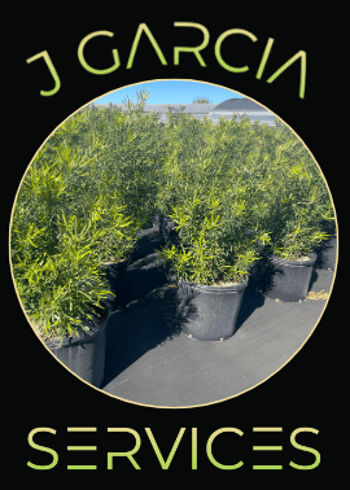“Bringing Tropical Beauty to Your Outdoors!”
Transform Your Outdoor Space: A Guide to Landscape Design
Designing your dream garden? We break down how smart layout, plant combos, and lighting can turn your yard into a personal paradise.
3/27/20254 min read


Understanding Layout Planning
Layout planning is a critical aspect of landscape design that sets the foundation for an enjoyable and functional outdoor space. It involves a conscientious assessment of the available area to determine the best combination of elements to suit the desired aesthetic and functional requirements. When beginning this process, homeowners should take into account the various characteristics of their yards, including existing vegetation, topography, and exposure to sunlight. This comprehensive evaluation allows for a thoughtful approach to design that maximizes utility while enhancing beauty.
One essential concept in layout planning is zoning, which involves dividing the outdoor space into specific areas designated for distinct purposes, such as entertaining, gardening, or relaxation. For instance, an outdoor dining area might be set up near the kitchen for convenience, while a quiet, shaded spot can serve as a retreat for reading and contemplation. Garden zones can be segmented based on the types of plants and their maintenance needs, thereby creating an organized and harmonious landscape.
Another vital component of achieving an effective layout is creating a cohesive flow between these designated areas. This can be accomplished by thoughtfully incorporating paths, borders, and focal points throughout the design. Well-defined pathways guide visitors through the spaces, connecting them seamlessly and ensuring accessibility. Borders, such as hedges or flower beds, help delineate different zones while adding layers of visual interest. Meanwhile, strategically placed focal points, such as a trellis or fountain, draw the eye and serve as visual anchors within the landscape.
Incorporating these elements successfully contributes to a balanced layout that caters to the unique needs of the homeowner, creating an inviting environment that encourages outdoor enjoyment.
Choosing the Right Plant Combinations
Creating a cohesive and visually appealing landscape begins with the careful selection of plant combinations tailored to your specific outdoor space. The key in this process lies in considering plant size, color, and texture, as well as their environmental requirements. By choosing plants that complement one another, you can enhance your landscape’s aesthetic appeal while ensuring that each species thrives in its designated spot.
Considering the climate of Central Florida, selecting native plants is crucial. Native species have evolved to adapt to local soil conditions, moisture levels, and temperature fluctuations, making them ideal for sustainable landscaping. Examples include the vibrant Florida coontie, a hardy ground cover, combined with the lush beauty of the Sabal palm, which adds height and tropical flair. Additionally, blending flowering plants such as the purple coneflower with the striking foliage of ornamental grasses creates a diverse, textured landscape that captivates the eye.
When designing your outdoor space, pay attention to seasonality. For instance, incorporating plants like the autumn sage provides striking color during the fall months, while the tropical hibiscus ensures a pop of color through the summer. This approach not only maintains visual interest throughout the year but also promotes a dynamic and engaging landscape. Grouping plants into clusters rather than isolated placements creates a more natural and cohesive look, allowing for variation in scales and textures that stimulate the senses.
In conclusion, achieving a well-designed landscape requires thoughtful consideration of plant combinations. By selecting native plants that resonate with the Central Florida environment and harmonizing color, size, and texture, one can create a stunning outdoor haven that reflects both personal vision and ecological sensibility.
Creating Flow and Functionality
Designing an inviting and functional outdoor space requires careful consideration of several elements to ensure optimal movement and accessibility. When planning a landscape design, it is essential to create a logical flow that allows for easy navigation throughout the area. Pathways serve as valuable tools to guide guests from one space to another, while also defining different zones within your outdoor environment. Wide, level paths made of durable materials not only enhance accessibility but also add an aesthetic touch to the landscape.
Another key aspect of creating a welcoming outdoor atmosphere is the integration of spaces that promote social interaction. Designing areas such as patios, decks, or gathering spots encourages communal engagement. Arranging seating in a circular or semi-circular pattern can foster a sense of closeness and encourage conversations. Moreover, incorporating functional outdoor furniture, such as benches, tables, and lounge chairs, can enhance comfort while catering to the specific needs of social gatherings, dining, or relaxation.
In addition to furniture placement, features such as water elements or fire pits can significantly enhance the usability and atmosphere of your outdoor space. Water features create a serene ambiance, attracting wildlife and providing soothing sounds that make the environment feel peaceful. Similarly, fire pits offer warmth and a focal point for evening gatherings, extending the usability of the outdoor area into cooler seasons. Strategically placed lighting can further enhance these features, ensuring your outdoor living space remains inviting and functional both day and night.
By thoughtfully considering movement, seating arrangements, and atmospheric elements, one can effectively transform an outdoor environment into a space that is not only visually appealing but also functional and inviting. The interplay of flow and functionality is essential to creating an outdoor oasis that enhances the enjoyment of the space for all users.
Enhancing Ambiance with Lighting
Effective lighting plays a pivotal role in landscape design, significantly transforming the ambiance of outdoor spaces. By selecting the right outdoor lighting solutions, homeowners can create a welcoming atmosphere that uplifts the aesthetic appeal and improves safety. There are three primary types of outdoor lighting: ambient, task, and accent lighting, each serving a unique purpose yet seamlessly working together to enhance the overall atmosphere.
Ambient lighting provides general illumination across an entire area, establishing a soft glow that allows for easier movement and encourages social interactions. Options such as string lights, lanterns, and downlights are common choices for creating a cozy environment during evening gatherings. Task lighting, on the other hand, focuses on specific areas where activities take place, such as patios or outdoor kitchens. Bright lights integrated into these spaces facilitate cooking and dining, making them more functional and enjoyable during nighttime hours.
Accent lighting serves to highlight particular features of the yard, such as trees, sculptures, or water features, creating visual interest and depth. Spotlights and well lights are ideal for this application, as they draw attention to the unique characteristics of the landscape while adding a sophisticated touch. Proper placement of light fixtures is crucial; for instance, placing lights at varied heights can contribute to a layered and dynamic look.
Imagine a backyard adorned with warm, ambient lighting interspersed with strategic accent lights that illuminate flower beds and pathways. This arrangement not only sets the mood for gatherings but also enhances safety by guiding guests through the space. By thoughtfully selecting and positioning outdoor lighting options, homeowners can truly transform their outdoor environments into inviting retreats, perfect for relaxation and entertainment.
Landscaping Services
Transforming outdoor spaces with vibrant plant installations.
Contact Us
Suscribe to our News Letter
© 2025. All rights reserved to J GARCIA SERVICES LLC.
Call:
Email:
Hours:
Mon - Sat
7:00 AM - 5:00 PM







Follow Us:
